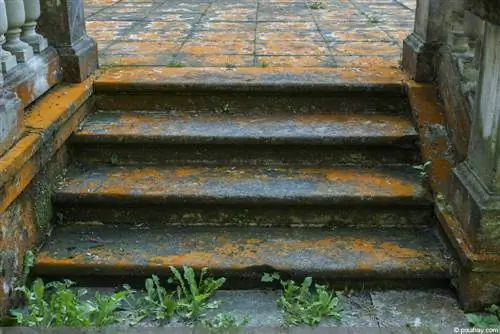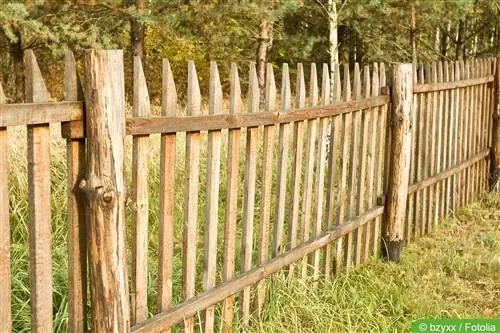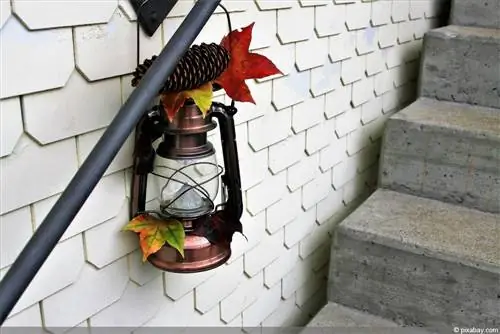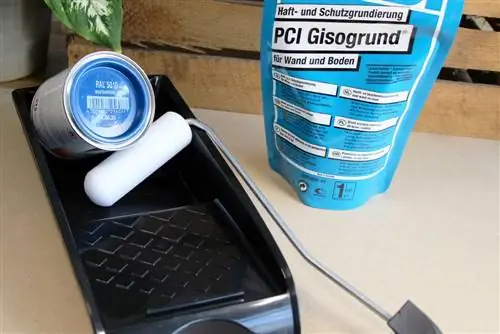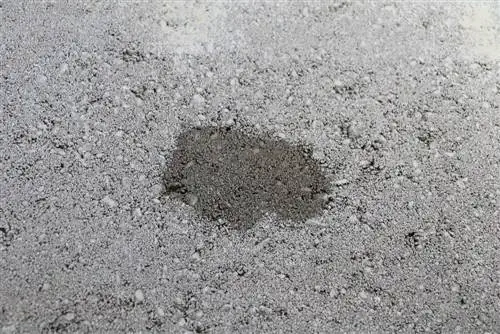- Author admin [email protected].
- Public 2023-12-17 03:39.
- Last modified 2025-06-01 06:48.
A beautiful concrete staircase enhances the entire house. This applies not only to outside stairs, but also inside, for example when it comes to the basement stairs. To ensure that the concrete steps remain beautiful for as long as possible, they are painted with concrete paint, which should be robust and wear-resistant. In order for the result to be decorative and durable, it is important to proceed correctly.
Use of concrete stairs
Concrete steps are used both outside and inside. They are durable and robust and can withstand greater loads. Concrete alone is usually not particularly attractive, which is why the steps are coated. In addition, the durability of the concrete is improved. It matters what the concrete stairs are used for and whether they are outside or inside. Outdoors, the concrete color must be able to withstand bad weather and the color should not fade in sunlight. Indoors, it is enough if the paint is sure-footed and impact-resistant.
The right preparation
Old paint that is damaged must be completely removed, this is the only way to ensure that the new layer of paint sticks to the concrete. A metal scraper or wire brush can be used for this. Solvent helps with stubborn paint residues. Intact old paintwork can remain on the steps, but must be sanded.
After the old paint is removed, the concrete stairs can be repaired if necessary. Cracks or holes are filled with appropriate filler. Before the stairs can be further worked on, the mass must harden. Chips or damaged corners can also be filled with concrete filler.
Cleaning and drying
Before the new paint is applied to the steps, the stairs must be thoroughly cleaned. Indoors, hot water with soap and a strong brush are used to remove dirt and grease. If available, a high-pressure cleaner is used outside. It is important that the concrete stairs dry well afterwards. This may take a few days; outdoor stairs in particular should be protected from new contamination. It therefore makes more sense to schedule the work during a period of good weather. Shortly before painting, the stone stairs can be wiped again with a damp cloth to remove dust.
Choose color
There are different paints for concrete stairs. These include:
- Concrete glazes
- 2 components varnishes
- Acrylic or silicone based paint
It is important to choose the right color for each staircase. It's not just about the color. Above all, you have to consider how durable the color should be. Depending on the intended use, concrete stairs are frequently walked on, so the paint must be abrasion-resistant.
Other possible properties:
- slip-proof, anti-slip
- wipeable or scrub-resistant
- protective and durable
- waterproof
additional features for outside:
- UV resistance
- impact and rainproof (hail)
Concrete glazes penetrate the concrete surface. They do not form a top layer and therefore do not flake off. They do not change the physical properties of the stairs. Acrylic-based paints are easy to work with and can be diluted with water. No brush cleaner is necessary to clean the work equipment. However, a transparent layer of varnish is applied to the paint to make it more durable. This step is not necessary if there are 2 component colors. They are made of an epoxy resin and must be freshly mixed before use.
Paint concrete steps correctly
A long durability of the color and the decorative effect are guaranteed by careful work.
Important:
New concrete stone stairs must first harden and dry properly. Residual moisture in the concrete can affect the paint application.
Which tools are used for painting depends on your own preferences. Most paints can be applied with a brush, roller or sprayer.
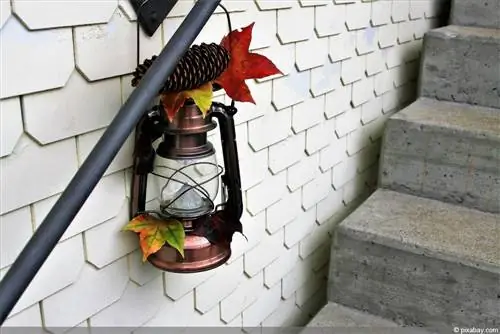
It is always necessary to pay particular attention to the edge and create a closed coating. It starts with a primer. This prepares the stairs for painting. When the primer is dry, the first coat of paint can follow. The drying time must be strictly adhered to. The first coat must not be too dry, otherwise the surface must be sanded before the second coat.
Outdoor stairs - influence of the weather
All colors have certain temperature ranges in which they can be processed. The minimum is 5 - 10 degrees. The maximum at around 20 degrees. When processing, care must be taken to adhere to these areas. Otherwise the respective color properties could change. It goes without saying that outdoor stairs should not be painted when it rains. However, the sun should not shine directly on the work area, otherwise the paint will dry too quickly.
Slip resistance
When it comes to stairs, it is particularly important that they can be walked on safely. A coating should therefore always be anti-slip. This is achieved in different ways:
- the paint used has anti-slip properties
- Sand is sprinkled onto the wet primer, which is then painted over after drying
- certain granules are mixed into the paint
After painting
Concrete stairs should not be walked on for some time after painting, even if the paint already appears dry. This protects the new coat of paint and ensures it cures completely. In the house, for example in the case of a basement staircase, ensure there is sufficient ventilation in order to dissipate the resulting air humidity and any evaporation from the paint.
Tip:
Stone stairs made of concrete outdoors must be protected from the weather for approx. 1 week.
Prices for concrete paint
A step with a width of 1 m, a height of 25 cm and a depth of 25 cm has an area of half a m².
- Concrete glaze: approx. 1.50 euros per m²
- Acrylic paint: approx. 1.30 euros per m²
- 2K- concrete color: approx. 4 euros per m²
Further costs are caused by primer, top coats and work materials.

